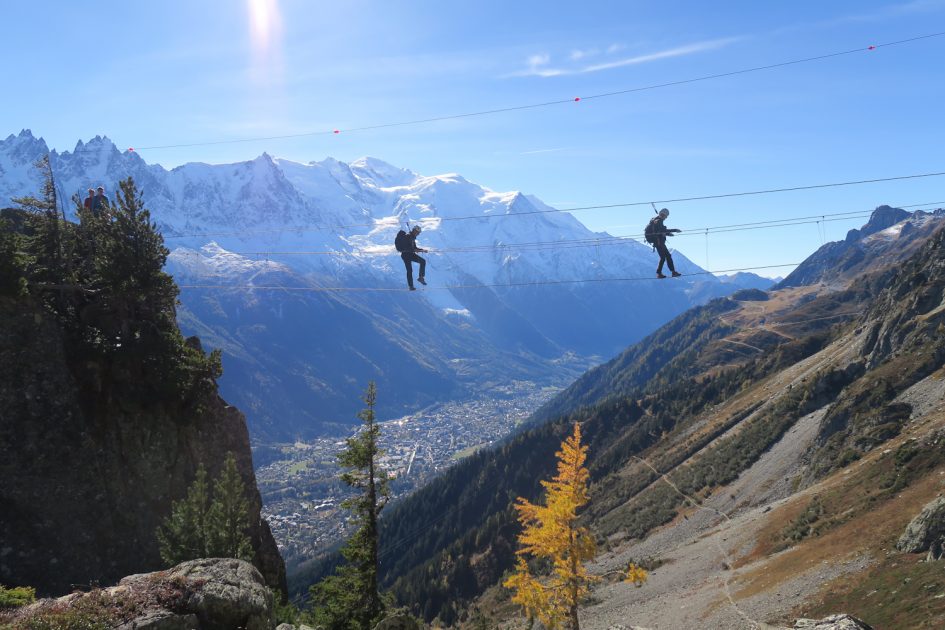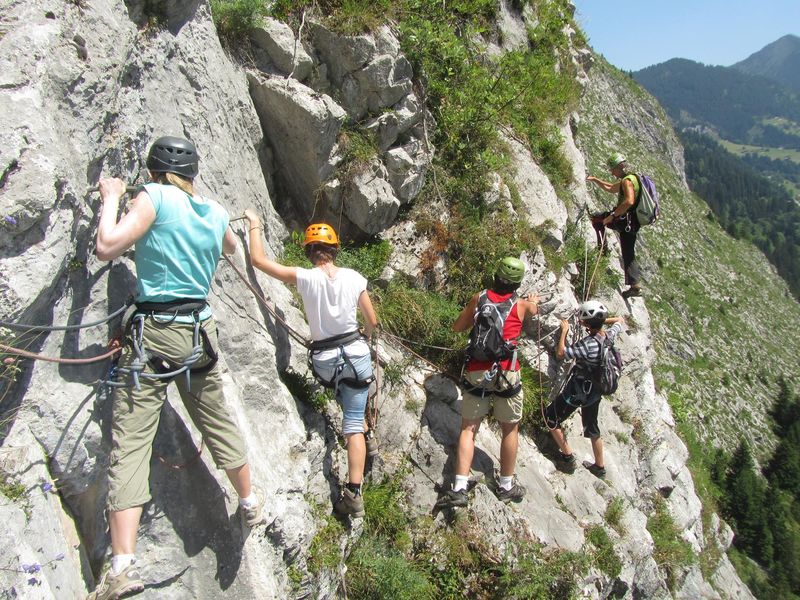Have you got what it takes to take on the challenge of Via Ferrata in the Alps? Fear the heights and combat every sense of vertigo? Whether you are a beginner or an expert, there are plenty of Via Ferrata trails across the Alps to choose from that are suited to all abilities. You just need a good head for heights and stable footing then there isn’t much else that can go wrong! Read on to find out some of my top Via Ferrata routes across the Alps…
What is a Via Ferrata?
Translated from Italian, the term ‘Via Ferrata’ means ‘Iron Roads’. It is an activity crossed between climbing and hiking with various supporting aids along the way including iron steps, ladders and cables to help progress along the route. Originally, Via Ferrata was used as a way to move troops across mountain peaks during WW1.
Where you do not necessarily need any climbing experience, if you are a beginner, it is highly recommended that you take a guide with you to show you the ropes; and even if you’ve done Via Ferrata in the Alps before, taking a guide is useful to discover the best sites and routes in the area.
What do I need?
You should make sure that you are fully equipped before clinging onto mountain faces and reaching the highest of heights. If you are to take a guide with you, often the equipment will be provided for you; otherwise here is a list of the key essentials:
- Helmet
- Via Ferrata sling with 2 carabiners and a breaking system to prevent fall
- Suitable footwear
- Gloves for grip and protection are recommended
- Backpack with water and snacks
- Absolutely zero fear of heights!
Best spots for Via Ferrata in the Alps
Chamonix Via Ferrata
Mer de Glace
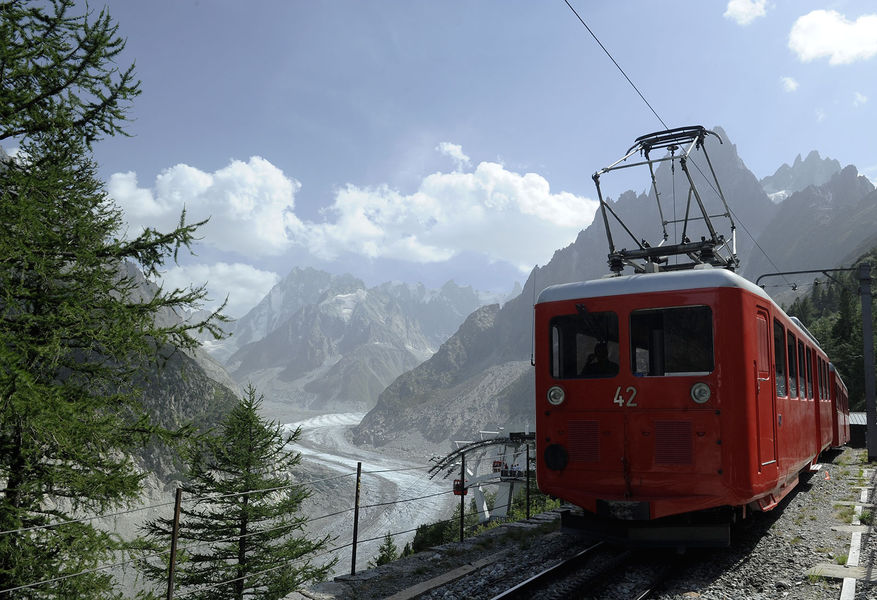
Take the train journey up from Chamonix to Montenvers, a short cable car ride, some steps down to the glacier and traverse across to the Via Ferrata start point – then you are ready to start. For this route, it is even more important to check the weather and the conditions of the glacier as you may well need crampons for the glacier snow.
Key Facts:
- Spring and Summer are the best times of year.
- Duration: 4-5 hours (a shorter route can be taken lasting 3 hours).
- Covering altitude of 1,923 m – 2,698 m.
- Route includes a total of 30 ladders.
- Grade: Difficult (due to the glacier traverse and length of route – it would be okay for beginners with a competent guide).
La Via Des Evettes – Flégère
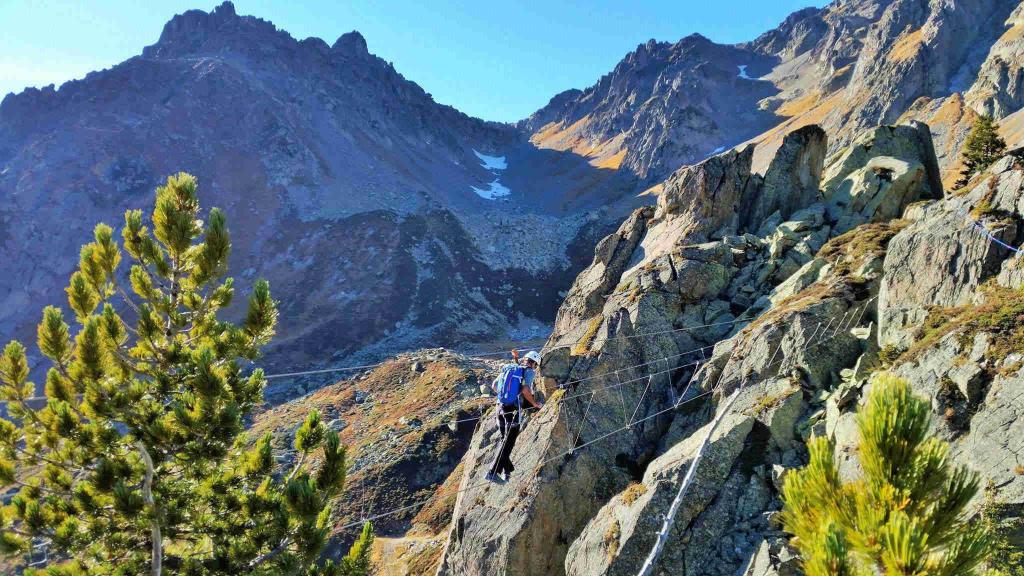
There are other routes for Via Ferrata in the Chamonix Valley including the exciting La Via Des Evettes in Flégère which is complete with a Himalayan bridge and the best views of Mont Blanc. The route is split into 2 sections to include the Via Ferrata itself (section 1) and a climbing route, ‘Via Corda’ (section 2).
Key Facts:
- Spring and Summer are the best times of year.
- Duration: 3-4 hours (section 1) up to 6 hours for both sections.
- Covering altitude of 1,900m – 2,350 m.
- Highlight: The Himalayan bridge
- Route Length: 5km
- Grade: Difficult. Section 1 is a great opportunity for beginners, the route gets tougher on Section 2.
Via Ferrata in Morzine
Rocher de la Chaux – (Morrillon)
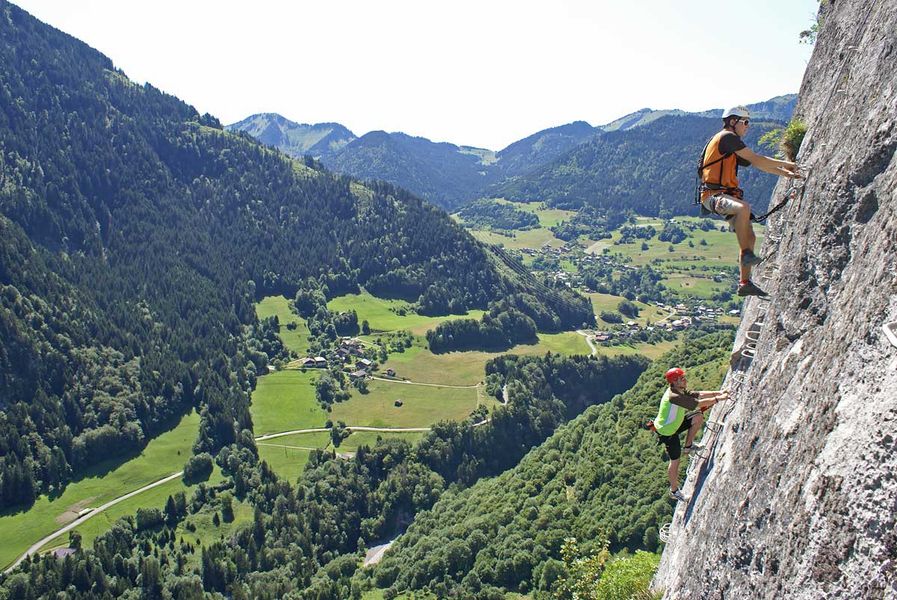
Just a 15 minute drive from the centre of the popular summer resort of Morzine, this Via Ferrata has a few different routes to consider. There is the Tête de l’Eléphant route (in translation, Elephant’s head) which takes in steep mountain faces (in parts even backwards leaning), high cliff faces, 10cm beam and the ultimate prize of beautiful views across the Roc d’Enfer, St Jean d’Aulps and Mont Blanc once you’ve reached the top.
For the more experienced, there is the ‘Path of the Eye’, Voie de l’Oeil, which is one of the toughest Via Ferrata climbs in France. Also with fantastic views at the summit, the Voie de l’Oeil comprises of some challenging overhangs and passages which rely on your physical strength and athleticism. Don’t worry, there are two points along the way where you can choose to rejoin the Tête de l’Eléphant if you are getting tired! Our director Fran took on this challenging route on their summer holiday in Morzine, leaving Andy and their two young girls by the lake with an ice-cream.
Key Facts:
- Open between May and October.
- Duration: approximately 1 hour 30.
- Covering altitude of 960 m – 1,173 m.
- Highlight: the short 10cm wide bridge is an unforgettable experience, not for the faint hearted!
- Grade: Difficult (Tête de l’Eléphant) and Extremely Difficult (Voie de l’Oeil).
Zermatt Via Ferrata
Via Ferrata Schweifinen
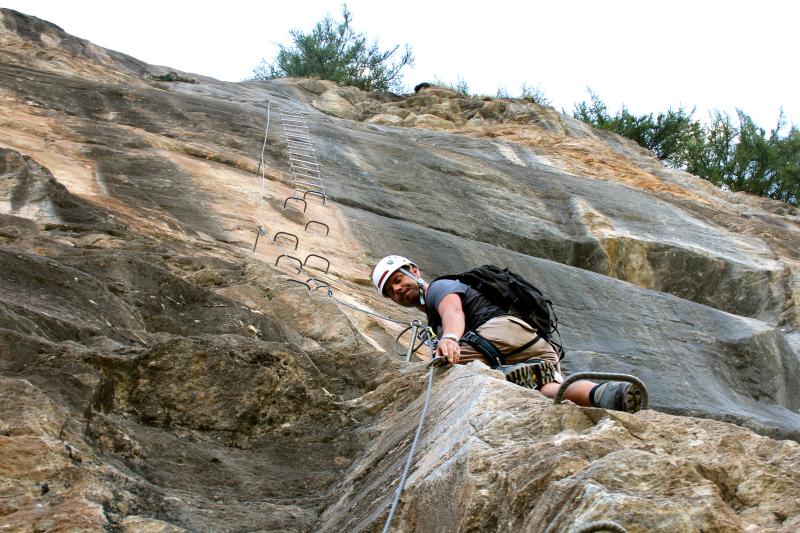
Next on my list of the top routes for Via Ferrata in the Alps is the Schweifinen. It comprises of three different routes (A, B, C) ranging from easy to medium, all climbing the heights of the Zermatt mountain faces. The fixed rope trails are open June to October and offer difficulty levels for all.
Route A: Starting on the Turuwang, this is an appropriate route for families with children aged from 10 years. The route is exposed to sections over the Triftbach river and has a few spots enroute worth stopping at, including the all important picnic stop and the Napoleonic Beresina hut.
Route B: This trail can be accessed in a few different ways and poses a bigger challenge than Route A. Appropriate for the more experienced climber, the route takes you across vertical, smooth and overhanging cliff faces with great views of the village – if you dare to look down! A highlight for this route would be the traverse across swinging tree trunks.
Route C: The same ‘medium’ level as B, but you will definitely need steady feet for the wobbly ladders along this trail. There is a step up in difficulty for this one and will again require the more experienced climbers with a high agility and fitness level. It is an interesting route with a wooden carved Virgin Mary statue to see, a bench to stop and admire the views, and a section of the climb with nothing but iron rugs underfoot.
Key Facts:
- Open between June and October
- Duration: Route A: 1 hr 15 / Route B: 2 hrs 15 / Route C: 3 hrs 30
- Distance: Route A: 2.7 km / Route B: 3.3 km / Route C: 5.5 km
- Covering altitude: Route A: 1,608 -1,925 / Route B: 1,608 – 1,972 / Route C: 1,603 – 2,164
- Grade: Easy – Medium/Hard
Gorner Canyon, Furri to Zermatt
Surrounded by powerful waterfalls, this Via Ferrata in Zermatt(with a twist) is a unique experience not to be missed. The route is surrounded by beautiful nature linked with suspension bridges, ladders and abseiling spots.
Key Facts:
- Duration: 3-4 hours
- Covering altitude of 1,620 m – 1,865 m.
- Route Length: 1km
- Grade: Suitable for all.
Via Ferrata in Sainte Foy
Rocher du Vent
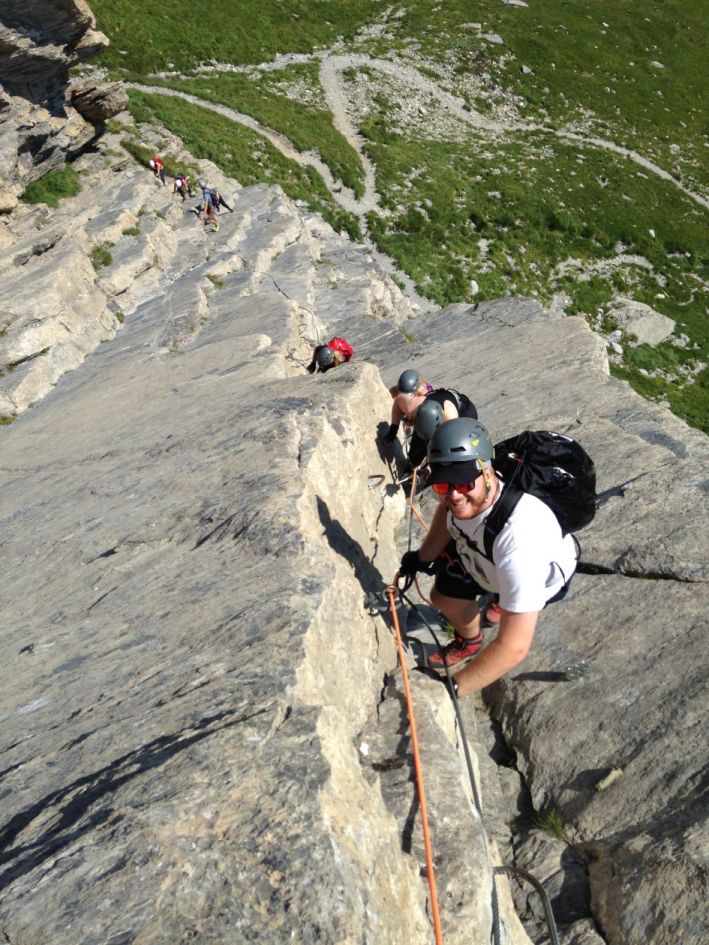
During the ascent and decent you are attached to the iron cable, this Via Ferrata in the alpine summer resort of Sainte Foy offers you that little bit more of security and support. It is accessible to most people with a sense of adventure and who are up for a bit of a challenge. F-J was lucky enough to experience this one himself with Tarantaise Tours!
Key Facts:
- Open between June and October
- Duration: 3 1/2 hours
- Distance: 850 m
- Covering altitude: 2,050 m – 2,360 m
- Highlights: Le pont Népalais.
- Grade: Medium
Do you fancy bringing out your inner Spiderman and giving Via Ferrata a go? We’d love to hear from you, so do get in touch so we can assist in finding you the best spots to Via Ferrata in the Alps as well as the best luxury summer chalets to recharge after a physically challenging day. Give us a call on +44 (0)1202 203659 or send us an email and our team at Alps In Luxury will happily help.
